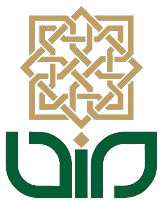The Faculty of Adab and Cultural Sciences collaborated with Ngasah forum#2 of Pusat Studi Manuskrip UIN Sunan Kalijaga in conducting a hybrid discussion entitled “The Urgency of Physical Aspects in Manuscripts Study.” Held on Wednesday, 8 February 2023 in the Auditorium Room of the Main Library of UIN Sunan Kalijaga, the committee invited Dr. Muhammad Wildan, MA. (Head of Relationship Department of Pusat Studi Manuskrip and the Dean of the Faculty of Adab and Cultural Sciences) and Professor Isamu Sakamoto (Senior Paper Conservator/Japan Foundation Asia Center/Grant Fellow). This discussion was led by Mu’ammar Zayn Qadafy, M.Hum. (the second Secretary of Pusat Studi Manuscript).
Before discussing manuscripts conservation, Prof. Isamu explained about daluang (paper mulberry or Broussonetia papyryfera Vent), that considered a traditional paper in Indonesia. It was one of the early forms of papers in Asia. He said that using daluang in Indonesia had been influenced by the manuscript traditions of Muslims inhabited in this archipelago. In addition to this, the methods of how to make a daluang paper is still unknown. Prof. Isamu then told us that by knowing the daluang’ string, it can predict where it originated from. Commonly, it was used for religious books purposes. It is interesting to note that Japan has a research institution that can determine daluang composition and examine its carbon. On contrary, Indonesia does not have such an institution.
Some places in Indonesia have a similar fashion as daluang. In Bali, for instance, it is called ulantaga usually used in jewelry and amulet items production. Another place is Sulawesi which has kutika for calendar production. Isamu suggests that Javanese ancient daluang is older than China daluang, around 400 years ago. Interestingly, youngsters in Japan are familiar with this tradition, either fuya or daluang.
Wildan, the second speaker, shared his experience as a researcher involved in the manuscripts digitalization processes in Yogyakarta. Accordingly, he described some issues related to the physical aspects of manuscripts such as incomplete texts because of insects, inks quality, and air conditions, including fungi and humidity. Most Yogyakarta manuscripts contain the holy Quran, jurisprudence or Fiqih, and history. Other themes are linguistics and pieces of literature, including Javanese works of literature, medications, arts, music, and puppet. Wildan stated that there are three steps in manuscripts preservation, starting codification, digitalization, then restoration as the last step.
Finally, the discussion was running smoothly, and some audience rose their hand to give feedback or to deliver questions about the materials from the speakers. The full version of this session can be watched on kanal Youtube Fakultas Adab dan Ilmu Budaya UIN Sunan Kalijaga Yogyakarta.
